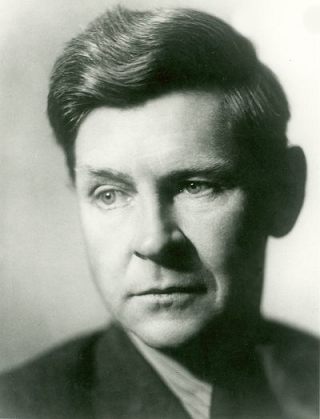Visions of the Future
Olaf Stapledon

The visionary author Olaf Stapledon (1886-1950) was a relative late-comer to science fiction. He initially pursued a career as a lecturer for the Workers’ Educational Association and University of Liverpool but after publishing numerous academic essays and taking a doctorate in Philosophy, Stapledon became increasingly drawn to fiction as a means of exploring his ideas.
In 1930 Stapledon published his first novel, Last and First Men, followed by Odd John (1935), Star Maker (1937) and Sirius (1944). In these novels, he traces human evolution and the search for truth across 2 billion years, develops his complex ideas of 'true community' and 'spirit' and introduces new concepts of alternate worlds, cosmology, cyborgs and immortality.
Stapledon astounded his contemporaries with the philosophical depth and imaginative breadth of these works and was profoundly influential on subsequent writers, such as Arthur C. Clarke. His novels are still regarded as some of the finest science fiction ever written. Among Stapledon's novels, Last and First Men, Sirius and Star Maker were also published in paperback by Penguin Books.
During the First World War, Stapledon served in the Ambulance Corps of the Society of Friends. This experience helped to formulate his pacifism and Stapledon became an active campaigner for peace and World Government. The Stapledon Society at The University of Liverpool meets regularly in his honour to discuss philosophy and literature.
Stapledon's unusual first name does not denote Scandinavian ancestry. He was actually born into a wealthy Liverpool shipping family when his parents happened to be reading The Early Kings of Norway by Thomas Carlyle.
Photograph copyright © John Stapledon. Courtesy University of Liverpool Library.

